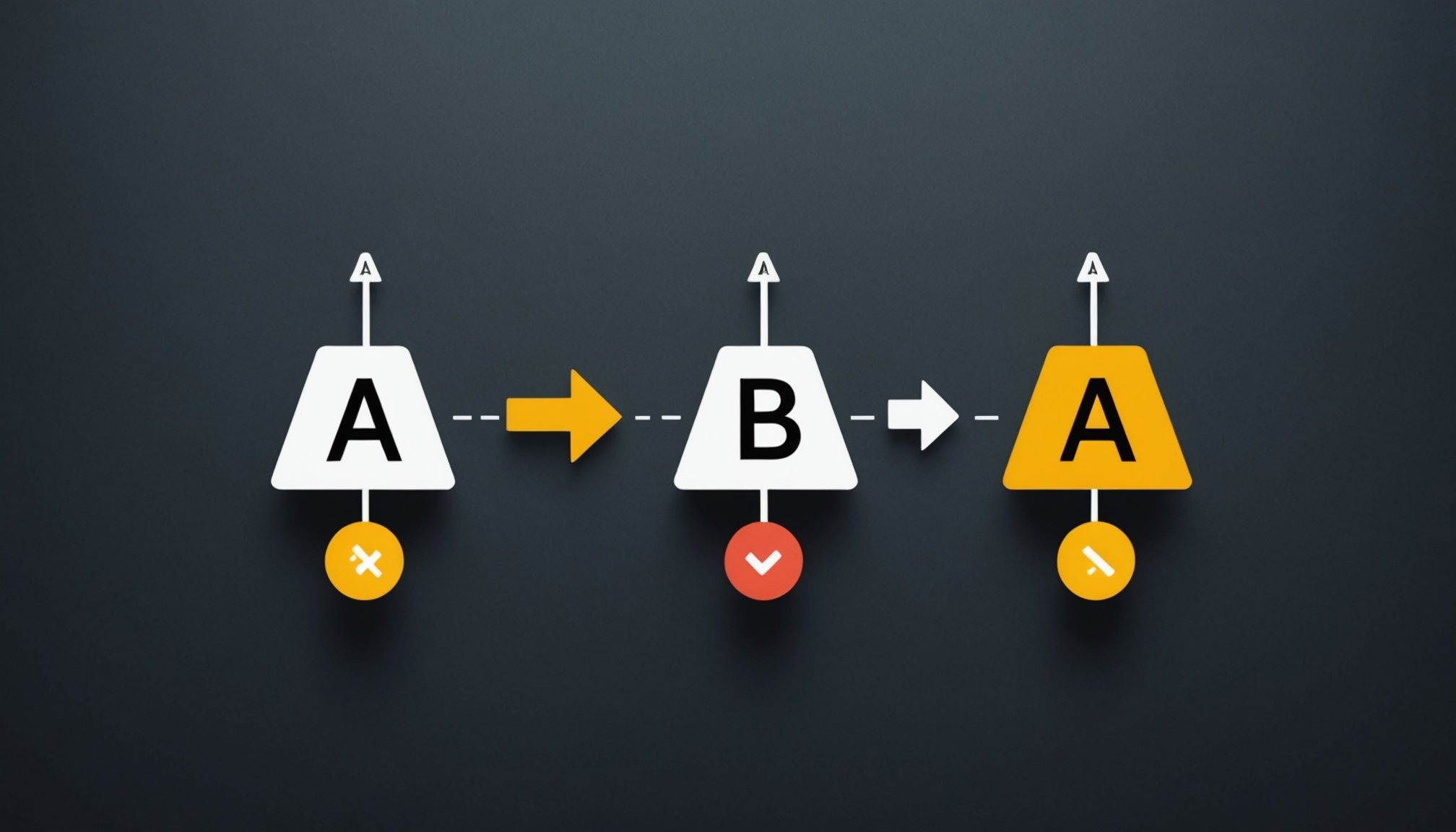A/B testing offers a powerful way to compare two versions of a webpage, email, or app feature and identify which performs better. By applying statistical methods to real user data, it reveals clear insights that guide smarter decisions. Understanding how to design, execute, and interpret tests can transform random guesses into measurable success, optimizing user engagement and business outcomes efficiently.
Fulfilling the Search Intent: Understanding and Implementing A/B Testing for Web, Email, and App Optimization
In digital optimization, a/b testing is a structured method for determining which changes to a website, email, or app truly move the needle on conversion goals. It is a randomized controlled experiment — visitors are split into groups, and each group experiences a different version (A or B) of an element. Data such as click-through or purchase rates are then analyzed to see which version performs better.
Also to read : How can UK marketers utilize blockchain for secure data transactions?
The process starts by setting precise objectives: what do you want to improve—newsletter sign-ups, cart completions, or user engagement? Next, formulating a hypothesis is key; for example, “Changing the CTA button color will increase click-throughs.” Once your hypothesis is defined, traffic is randomly split between the control and the variation.
Running the experiment requires reliable tools that collect unbiased data and protect sample integrity. Common platforms like Optimizely, Google Optimize, and Kameleoon manage this with dashboards tracking core metrics—conversion rate, bounce rate, and revenue per visitor.
Also read : What Impact Does the Latest Computing Technology Have on Marketing Strategies?
Understanding statistical significance is vital. Typically, a 95% confidence interval is targeted to rule out chance. Calculating the proper sample size (based on expected change and current performance) ensures the results are meaningful and not just lucky anomalies. Statistical tools such as the Z-test, Welch’s t-test, or Bayesian analysis guide interpretation—Bayesian methods give ongoing probabilities, while more traditional approaches specify results only after tests conclude.
Advanced teams will segment audiences or even compare several variables simultaneously (multivariate testing), but always return to evidence-driven decision-making—optimizing user experience one experiment at a time.
Real-World Examples and Practical Implementations
A/B testing basics fundamentally change decision-making by enabling teams to validate ideas using concrete data. Consider web optimization: an e-commerce site might deploy split test methods on a landing page, altering button color or headline text. For instance, test variant creation could involve designing one version with a short form and another with an extended form, then employing data analysis for experiments to determine which yields higher conversion rate optimization.
In marketing campaign testing, experimentation can be seen in subject line tests for marketing email blasts. Split test methods allow brands to send two different subject lines to equal slices of the audience, leveraging data analysis for experiments to measure open rates. Such applied experiment design principles help pinpoint what drives engagement in B2B lead generation, while test variant creation can focus on different value propositions for campaign landing pages.
Mobile app teams routinely use A/B testing basics to fine-tune onboarding flows. They apply experiment design principles, split test methods, and test variant creation to feature tutorials or skip options, and analyze funnel data for conversion rate optimization. Strategic data analysis for experiments reveals user friction points, guiding further conversion improvements. Through iteration and focused marketing campaign testing, brands scale wins while minimizing resource waste.
Tools, Frameworks, and Best Practices for Reliable Experimentation
Overview and Comparison of Leading A/B Testing Platforms
A reliable testing tools overview is foundational for effective conversion rate optimization. Tools like Optimizely, VWO, and Kameleoon support intuitive experiment design, while Google Optimize remains a favored entry point for many teams. Open source testing platforms offer flexibility and cost-efficiency, although they may lack advanced segmentation and targeting or continuous experimentation capabilities. Each solution varies in experiment tracking methods, site performance testing setups, and integration depth, so a software solutions comparison should focus on platform fit, ease of use, and support for segmentation.
Frameworks for Running and Scaling Experiments
Effective experimentation in marketing requires a structured approach: set goals, prioritize hypotheses, and rigorously execute experiment stages. Frameworks built for continuous experimentation allow teams to document learnings, streamline test variant creation, and keep campaign tracking transparent. Test duration planning, sample size calculation, and regular test data cleaning ensure the reliability of outcomes, while dashboards and collaborative workflows underpin scalable, repeatable success.
Segmentation, Targeting, and Avoiding Bias
Robust segmentation and targeting are needed to draw actionable insights from randomized controlled trials. Representative sampling, systematic experiment randomization, and vigilance against bias are supported by test segmentation strategies and experiment tracking methods. False positives often stem from inadequate test audience definition or insufficient data, so combining best practices with automated analytics will mitigate these risks.
Tracking, Analyzing, and Iterating on Test Results
Dashboards, visualization, and flexible reporting methods drive efficient data analysis for experiments. Experiment tracking methods highlight performance indicators and help teams interpret results rapidly, so continuous experimentation can be maintained. Leveraging metric tracking dashboards enhances transparency while supporting test data cleaning, experiment hypothesis revision, and advanced experiment techniques for ongoing optimization efforts.
Advanced Considerations, Mistakes to Avoid, and Industry Impact
Choosing the right testing method
Selecting between A/B testing, multivariate testing, split URL methods, and advanced strategies like the multi-armed bandit model requires precision. Each approach suits different use cases: A/B tests isolate single changes, while multivariate testing introduction enables simultaneous experimentation with several page elements. Split URL techniques evaluate foundational redesigns, and the multi-armed bandit automatically shifts traffic toward high performers, accelerating website optimization techniques. You’ll benefit most by aligning methods with your goals and site complexity, especially for conversion rate improvement or impact on revenue optimization.
Common pitfalls
Ignoring statistical rigor often leads to errors. Error analysis in testing reveals that acting on insufficient sample sizes or changing variables mid-test produces unreliable results. Overtesting, or running too many variations without adequate traffic, clouds your data. Keep your experimentation scientific—define hypotheses, respect test duration, and apply robust best practices in experimentation to secure valid outcomes.
Case studies and sector-specific applications
Case studies in A/B testing show real-world effectiveness across industries. eCommerce optimizes checkout flows; SaaS focuses on onboarding experiences. Travel brands employ website optimization techniques for booking boosts, while media leverages insights for greater engagement. Political campaigns, too, harness experimentation for outreach optimization. Each sector demonstrates how tailored testing strategies lead to measurable wins.
Addressing SEO and ethical concerns
To prevent SEO setbacks, follow SEO split testing methods—use canonical tags, temporary redirects, and avoid cloaking. Ethical considerations mean transparent practices: inform users of experiments without deception. Ongoing error analysis in testing and clear documentation foster user trust while protecting site visibility and integrity.







